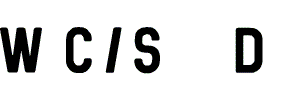VERNACULAR GESTURES AND EMBODIED KNOWELDGE
“…intelligence is not located in any body part but is distributed throughout the entire field of relations comprised by the presence of the human being in the inhabited world.”
(“Feet, footwork, footwear and ‘being alive’ in the modern school” by Dr Catherine Burke, Faculty of Education, University of Cambridge)
A focus of a contemporary art system on the notions of ‘contemporary’ often disregards vernacular practices that actually connect us to personal and collective history, open space for rooted knowledge of peoples and territories and give a perspective for conscious action for the future.
By introducing to contemporary art thinking and art practice the notions of indigenous and embodied knowledge, we encourage you to find inspiration in learning by doing, to redefine the meaning of failure and establish connections with vernacular practices of you region and/or family.
BLOCK 3.1
An input for this task is provided by Biljana Ciric, WSCSD program initiator.
Intro
Look closely into your surroundings. Where is the vernacular around you? Do you live near a village, a rural area, an ethnographic museum? Do you have something crafted in your apartment?
List your findings
______________
______________
______________
______________
______________
Now look at what you’ve got in your closest social strata. Are there practices in your family that are vernacular? Ask your senior family members.
We encourage you to trace these vernacular gestures, learn about them.
Task
-
Choose a vernacular practice and trace it backwards and forwards.
-
Where did it come from? How is it preserved today? Is it evolving? Is it affected by technology? Are there contemporary artists / practitioners trying to reactualise it?
-
Compose your research into a presentation.
Additional materials
Self-feedback
-
Reflect on your research. Do you feel inspired, happy, sad or devastated on how this vernacular practice lives through today?
-
Expand your thoughts on how indigenous practices should be maintained, implemented in contemporary life.
BLOCK 3.2
Together with artist and curator Anastasia Albokrinova we encourage you to look closer into your habitual practices and let a vernacular gesture pass through your body and affect your thinking.
Intro
How are the habits of a body shaped by digital reality? In which ways grasping a vernacular practice can expand your body consciousness? What practices of commonness are developed through the embodied knowledge? How does an embodied knowledge transform into ‘knowing'?
This task offers you to focus on a particular vernacular practice of your choice and trace the process of learning in a diary. It also questions the means of transmission, both acquiring and passing the knowledge forward.
Task
-
Choose a vernacular practice you would like to grasp. If you can't think of something - make a bread or cook something according to your family recipe.
-
Create a diary: make notes on the ways you learn, what you notice on the way.
-
Think about failure. What does it mean - to fail? How failure can be a driving force for learning and creativity?
-
After doing a vernacular gesture, transmit it to one more person.
Additional materials
Self-feedback
-
Take a moment to reflect on your body: what inspirations, fatigues did you experience?
-
What gestures did you grasp, how did they evolve in the process of learning?
-
How would you describe the knowledge you have acquired?
